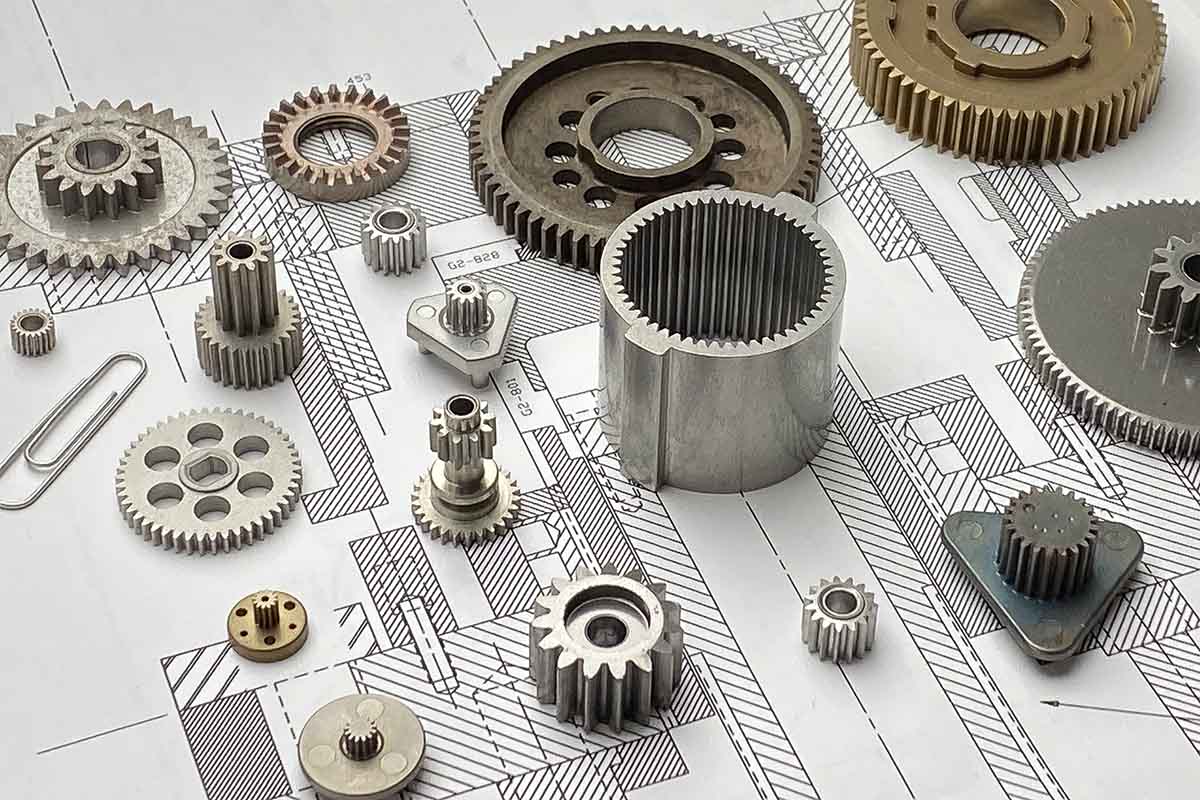
CONVENTIONAL PM PROCESS
Also known as press-and-sinter, the process consists of mixing elemental or alloy powders with lubricants or additives to produce a homogeneous mixture.
Additives may help improve machinability, wear resistance, or lubricity of the part; compacting the mixture in a die at pressures typically as low as 138 MPa (10 tsi) or as high as 965 MPa (70 tsi) depending on the density requirements of the part and the compressibility of the powder being compacted.
In the typical sintering step, the “green” component, meaning a component that has been pressed but not sintered, is conveyed through a controlled-atmosphere furnace. The parts are heated to a temperature below the melting point of the base metal, held at the sintering temperature, and then cooled as the part exits the furnace. Sintered parts have the strength levels to meet functional requirements of the components.
Many PM parts are ready for use after sintering. Value-added properties or features can be obtained through repressing, forging, impregnation, machining, vibratory finishing, plating, shot-peening, or heat treatment.
Most conventional PM parts weight less than 5 pounds (2.27 kg). While many of the early PM parts, such as bushing and bearings, were very simple shapes, today’s sophisticated PM process produce components with complex contours and multiple levels.




